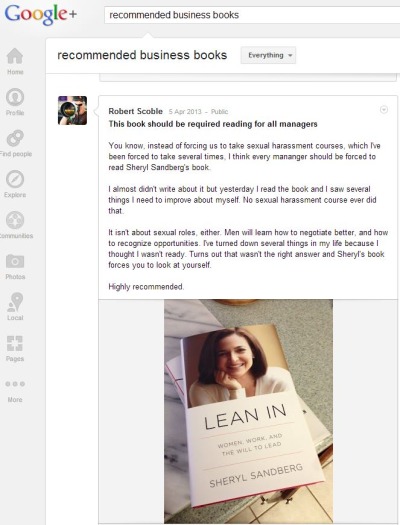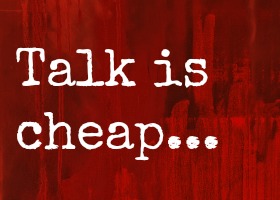
If you want clients and prospective clients to think of you as the go-to person, for whatever service you provide, I believe you’ll find this post really useful.
It’s based around 3 steps you can take, which will change the way people think and feel about you, so you become their irresistible choice.
What is a go-to person?
Firstly, I’d like to confirm what I am referring to when I use the term, go-to person. I’m talking specifically about those valued people in business, who we immediately think of when we have a need, related to their area of expertise.
When someone thinks of you as their go-to person for a particular need, they go direct to you.
- They don’t ask a friend for a recommendation.
- They don’t poll their friends on Facebook.
- They don’t take their need to a search engine.
- YOU get the call!
Clearly, the commercial value of being the go-to person for your marketplace is huge. Not only will you retain your existing clients for longer, you will also attract more inquiries from prospective clients.
To earn this valuable position, we need to focus on 3 core areas.
1. Demonstrate that you know your subject
A newsletter or blog is a great way to achieve this. By sharing useful ideas and information, people come to think of you as a valuable resource.
This is why it’s so important to avoid the common mistake, of only offering diluted information to your readers. If you hold back the good stuff, the really useful ideas, you will cause your readers to assume that shallow information is all you know!
Give away as much value, freely, as possible. Now, at this point some of you will be concerned, that if you give lots of valuable information away for free, people won’t bother hiring you. That is actually the exact opposite of how it works.
Here’s what really happens, when you offer extremely useful information for free in your newsletter or blog posts:
- Some people will use your free ideas, with no intention of hiring you. As they were never going to hire you anyway, you lose nothing.
- Some people will use your free ideas and get part of the way, then realise they need your expert help. These people will call you. Had you not given so much free information away, you’d never have positioned yourself as their go-to person.
- Some people will see the value of what you do, then figure out very fast that it’s far better to hire you to do it for them.
It works. People in that 2nd and 3rd group make up almost all of my non-referred clients!
2. Demonstrate that you are approachable
If we want people to get in touch with us, we need to be as approachable as possible to them. This means taking every opportunity to demonstrate that we are friendly and professional.
Unbelievably, many business owners are cranky or confrontational, even when they are sharing their thoughts online, for the world to see. This is, of course, their prerogative. However, there is a price to pay for being cranky or confrontational. It makes us far less approachable. If we want people to feel comfortable approaching us, we need to be approachable. We need to show humility. We need to remove any barriers.
3. Demonstrate your reliability
Again, publishing a newsletter or blog posts is a great way to demonstrate your reliability. Of course, this is only the case if you have reliably published content over a reasonable period of time. If you write a newsletter or blog and the last thing you published was several months ago, it works directly against you. Instead of demonstrating your reliability and stick-ability, you do the opposite.
If you have been in business for a long time, let people know. When a prospective client reads my about page, they can see that I set this marketing business up in 1995 and that I have worked in marketing all my adult life. That, along with almost 6 years worth of publishing ideas via Jim’s Marketing Blog, offers those thinking of hiring me a huge confidence boost. You should do the same for your prospective clients and customers too.
IMPORTANT: Drawing a line
It’s important at this point, to make a very clear distinction between positioning yourself as the go-to person and positioning yourself as the freebie person.
Yes, it’s a privilege to be regarded by our family and friends as a person they know they can rely on for whatever they need. However, in business, we need to draw a line between what we are prepared to do for free and what we will offer as a paid service. Otherwise, we are likely to become a magnet for freebie hunters. Freebie hunters are people who abuse the nature of others, with selfish demands for free goods and services.
For example, I occasionally get emails from people, asking me to do unpaid work for them. These range from things that would take me a few hours, to tasks that would take me a week.
It’s worth mentioning that many of my clients started off as readers, yet none, not one, of my clients came to me after asking for freebies.
How to get the balance right: The one-to-many approach
There best way to offer free information, which is scalable and sustainable, is to adopt the same approach I use here. I call it the one-to-many approach.
Here’s how I do it: All the free work I do for people is offered via Jim’s Marketing Blog and the email version of the blog. I call it the one-to-many approach, because I create one piece of work and it benefits many people.
Offering one-to-one work for free, simply does not scale. It makes no sense for me to give an hour of my time to 1 selfish person, when I can use that same hour to write something, which will benefit thousands of people.
Finally
For some business owners and consultants, there is a huge mindset change required, to adopt the idea of freely sharing, valuable content. However, for those who embrace the idea, the rewards are huge. It’s the primary marketing model I have used for years and is the most powerful form of marketing I have ever seen. I can’t recommend it highly enough to you.










